
The Filter Bubble: What the Internet Is Hiding From You
by
Eli Pariser
Published 11 May 2011
Chapter Eight: Escape from the City of Ghettos 217 “the nature of his own person”: Christopher Alexander et al., A Pattern Language (New York: Oxford University Press, 1977), 8. 217 “Long Live the Web” Sir Tim Berners-Lee, “Long Live the Web: A Call for Continued Open Standards and Neutrality,” Scientific American, Nov. 22, 2010. 219 “need to address the core issues”: Bill Joy, phone interview with author, Oct. 1 2010. 220 ideal nook for kids: Alexander et al., A Pattern Language, 445, 928–29. 220 “distinct pattern language”: Ibid., xvi. 220 “city of ghettos”: Ibid., 41–43. 221 “dampens all significant variety”: Ibid., 43. 221 “move easily from one to another”: Ibid., 48. 221 “support for his idiosyncrasies”: Ibid. 222 “psychological equivalent of obesity”: danah boyd.
…
And as technology gets better and better at directing our attention, we need to watch closely what it is directing our attention toward. 8 Escape from the City of Ghettos In order to find his own self, [a person] also needs to live in a milieu where the possibility of many different value systems is explicitly recognized and honored. More specifically, he needs a great variety of choices so that he is not misled about the nature of his own person. —Christopher Alexander et al., A Pattern Language In theory, there’s never been a structure more capable of allowing all of us to shoulder the responsibility for understanding and managing our world than the Internet. But in practice, the Internet is headed in a different direction. Sir Tim Berners-Lee, the creator of the World Wide Web, captured the gravity of this threat in a recent call to arms in the pages of Scientific American titled “Long Live the Web.”
…
It’s still possible to erect systems that don’t trap us in an endless loop of self-flattery about our own interests or shield us from fields of inquiry that aren’t our own. First, however, we need a vision—a sense of what to aim for. The Mosaic of Subcultures In 1975, architect Christopher Alexander and a team of colleagues began publishing a series of books that would change the face of urban planning, design, and programming. The most famous volume, A Pattern Language, is a guidebook that reads like a religious text. It’s filled with quotes and aphorisms and hand-drawn sketches, a bible guiding devotees toward a new way of thinking about the world. The question that had consumed Alexander and his team during eight years of research was the question of why some places thrived and “worked” while others didn’t—why some cities and neighborhoods and houses flourished, while others were grim and desolate.
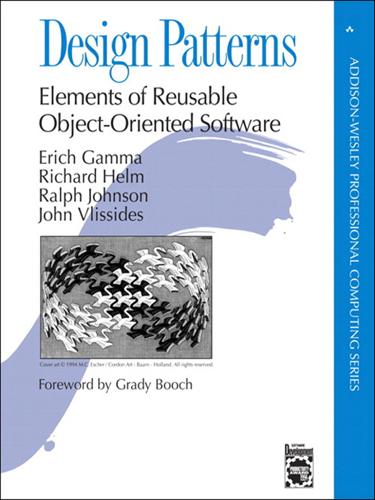
Design Patterns: Elements of Reusable Object-Oriented Software (Joanne Romanovich's Library)
by
Erich Gamma
,
Richard Helm
,
Ralph Johnson
and
John Vlissides
Published 18 Jul 1995
Although such a representation might make automating patterns possible, at this stage it’s more important to explore the space of design patterns than to formalize it. From Alexander’s point of view, the patterns in this book do not form a pattern language. Given the variety of software systems that people build, it’s hard to see how we could provide a “complete” set of patterns, one that offers step-by-step instructions for designing an application. We can do that for certain classes of applications, such as report-writing or making a forms-entry system. But our catalog is just a collection of related patterns; we can’t pretend it’s a pattern language. In fact, we think it’s unlikely that there will ever be a complete pattern language for software.
…
Design Patterns Elements of Reusable Object-Oriented Software Erich Gamma Richard Helm Ralph Johnson John Vlissides Boston • San Francisco • New York • Toronto • Montreal London • Munich • Paris • Madrid Capetown • Sidney • Tokyo • Singapore • Mexico City Material from A Pattern Language: Towns/Buildings/Construction by Christopher Alexander, copyright © 1977 by Christopher Alexander is reprinted by permission of Oxford University Press, Inc. Many of the designations used by manufacturers and sellers to distinguish their products are claimed as trademarks. Where those designations appear in this book, and we were aware of a trademark claim, the designations have been printed in initial capital letters or in all capitals.
…
Focusing on such mechanisms during a system’s development can yield an architecture that is smaller, simpler, and far more understandable than if these patterns are ignored. The importance of patterns in crafting complex systems has been long recognized in other disciplines. In particular, Christopher Alexander and his colleagues were perhaps the first to propose the idea of using a pattern language to architect buildings and cities. His ideas and the contributions of others have now taken root in the object-oriented software community. In short, the concept of the design pattern in software provides a key to helping developers leverage the expertise of other skilled architects. In this book, Erich Gamma, Richard Helm, Ralph Johnson, and John Vlissides introduce the principles of design patterns and then offer a catalog of such patterns.
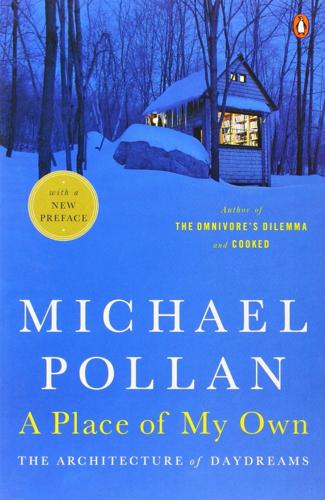
A Place of My Own: The Architecture of Daydreams
by
Michael Pollan
Published 15 Jan 1997
Alexander calls these forms “patterns,” and his best-known book, A Pattern Language*, published in 1977, is essentially a compilation of 253 of them in a phone-book-thick volume that reads like a vast field guide or encyclopedia. Each pattern is numbered and named (“159: Light on Two Sides of Every Room”), defined in a sentence (“People will always gravitate to those rooms which have light on two sides, and leave the rooms which are lit from one side unused and empty”), and illustrated with a photograph or drawing. Charlie hadn’t exactly read A Pattern Language, he admitted, but he’d browsed around in it enough to decide that the definitions and illustrations were apt and even useful, and he suggested I have a look.
…
Indeed, Alexander states that the discovery of any one of these patterns—of something like “light on two sides of every room” or “entrance transition”—is “as hard as anything in theoretical physics.” In a strange and wonderful way, A Pattern Language manages to combine a rich poetry of everyday life with the monomania of someone who believes he has found a key to the universe. I suspect Charlie had soaked up the former and skipped over the latter. With my own well-established weakness for theories, I wasn’t about to do anything of the kind. I dug in. Alexander contends (in both A Pattern Language and a more theoretical companion volume called The Timeless Way of Building) that the most successful built forms share certain essential attributes with forms in nature—with things like trees and waves and animals.
…
Charlie hadn’t exactly read A Pattern Language, he admitted, but he’d browsed around in it enough to decide that the definitions and illustrations were apt and even useful, and he suggested I have a look. My first impression of A Pattern Language was that it reminded me of Charlie’s booklet a bit, except that there were long, interesting captions to accompany the photographs, as well as an overarching theory. Like the pictures in Charlie’s book, Alexander’s were strongly evocative of the experience of place: One showed a casement window flung open to embrace an early-morning street scene that reminded me of Paris readying to greet the workday; another, a trellis of bean vines that filigreed the sunlight coming through the window of a shack.

Designing Social Interfaces
by
Christian Crumlish
and
Erin Malone
Published 30 Sep 2009
The social patterns support the entire lifecycle that a user may experience within a site or application, from signing up to actively participating, to building a reputation, to dating or collaborating with friends, to collaborative games and even moderation. We are building a vocabulary and language for social application design in the same spirit as Alexander: We were always looking for the capacity of a pattern language to generate coherence, and that was the most vital test used, again and again, during the process of creating a language. The language was always seen as a whole. We were looking for the extent to which, as a whole, a pattern language would produce a coherent entity. Download at WoweBook.Com So, That’s All the Little Parts: Now What? 13 Patterns…or Clichés? Clichés. They’re a dime a dozen. Avoid them like the plague, or so we’re told.
…
We are interested in hearing your stories about designing for this space and what patterns have been most successful, which ones need more work, which should be tossed out entirely because the world has moved beyond them, and which new and emerging interactions might be added to the library. As we mentioned in the beginning, we approached this as a pattern language, and like any language, this is a living, evolving, and ever-changing beast. As Christopher Alexander writes in A Pattern Language: This language, like English, can be a medium for prose or a medium for poetry. The difference between prose and poetry is not that different languages are used, but that the same language is used differently. In an ordinary English sentence, each word has one meaning and the sentence too, has one simple meaning.
…
User experience design patterns give guidance to a designer for how to solve a specific problem in a particular context, in a way that has been shown to work over and over again. The notion of using interaction design patterns in the user experience design process follows the model that computer software programming took when it adopted the concepts and philosophies of Christopher Alexander. Alexander, an architect, wrote the book A Pattern Language. In his book he describes a language—a set of rules or patterns for design—for how to design and build cities, buildings, and other human spaces. The approach is repeatable and works at various levels of scale. Alexander says that “each pattern describes a problem which occurs over and over again in our environment, and then describes the core of the solution to that problem, in such a way that you can use this solution a million times over, without ever doing it the same way twice.”

Peopleware: Productive Projects and Teams
by
Tom Demarco
and
Timothy Lister
Published 2 Jan 1987
All Rights Reserved. Used by Permission. Reprinted by Permission of Hal Leonard Corporation. For the excerpts and graphics in Chapter 13, Used by permission of Oxford University Press: From The Oregon Experiment by Christopher Alexander et al. Copyright © 1975 by Christopher Alexander. From A Pattern Language by Christopher Alexander et al. Copyright © 1977 by Christopher Alexander. From The Timeless Way of Building by Christopher Alexander. Copyright © 1979 by Christopher Alexander. For the excerpt in Chapter 15, from “Death of a Salesman” by Arthur Miller: From DEATH OF A SALESMAN by Arthur Miller, copyright 1949, renewed © 1977 by Arthur Miller.
…
“By Permission of Oxford University Press.” Figure 13–1 Swiss town, an example of organic order, without a master plan.3 3. Ibid., p. 46. Patterns Each of the patterns of The Timeless Way of Building is an abstraction about successful space and interior order. The central volume of the set, A Pattern Language, presents 253 of these patterns and weaves them into a coherent view of architecture. Some of the patterns have to do with light and roominess, others with decor, or with the relationship between interior and exterior space, or with space for adults, for children, for elders, or with traffic movement around and through enclosed space.
…
Each pattern is presented as a simple architectural aphorism, together with a picture that illustrates it and a lesson. In between, there is a discussion of the whys and wherefores of the pattern. As an example, consider the following illustration and extract from Pattern 183, Workspace Enclosure: Figure 13–2 Workspace enclosure.4 4. A Pattern Language by Christopher Alexander (1977): 170 words (p. 846) © 1977 by Christopher Alexander. “By Permission of Oxford University Press.” People cannot work effectively if their workspace is too enclosed or too exposed. A good workspace strikes the balance. . . . You feel more comfortable in a workspace if there is a wall behind you. . . .
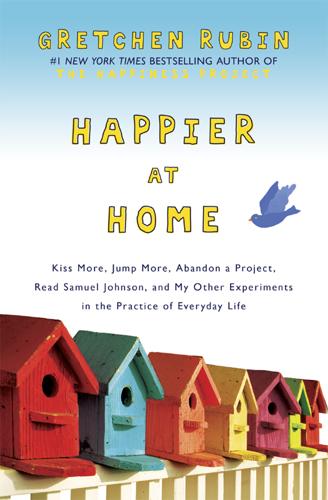
Happier at Home: Kiss More, Jump More, Abandon Self-Control, and My Other Experiments in Everyday Life
by
Gretchen Rubin
Published 3 Sep 2012
I loved the secret place, but I’d never thought much about it—why I’d wanted it, or why it gave me so much satisfaction. It was only after reading Christopher Alexander’s A Pattern Language that I recognized my desire for a secret place as a universal instinct. In Alexander’s scheme, pattern number 203, “Child Caves,” is followed by number 204, “Secret Place”: “Where can the need for concealment be expressed; the need to hide; the need for something precious to be lost, and then revealed?” To address this need, A Pattern Language advises: “Make a place in the house, perhaps only a few feet square, which is kept locked and secret; a place which is virtually impossible to discover—until you have been shown where it is.”
…
My theme of “Possessions,” however, wouldn’t extend to furniture, wallpaper, bathroom tile, or any permanent aspect of the apartment. Although I knew that many people might be eager to address the home-decor aspect of home, I’d never been interested in interior design—window treatments, kitchen countertops, or anything else—that is, until I read the haunting, evocative book A Pattern Language. In it, visionary architect Christopher Alexander and his team identify 253 “patterns” that repeat through the architecture that people find most pleasing. As I read about these patterns, I began to fantasize for the first time about living in a dream house, one that incorporated patterns such as “Sleeping to the East,” “Staircase as a Stage,” “Garden Growing Wild,” “The Fire,” and “Private Terrace on the Street.”
…
This list doesn’t attempt to cover all the most important works, but instead highlights some of my personal favorites. ON HOUSE AND HOME Alexander, Christopher. The Nature of Order: An Essay on the Art of Building and the Nature of the Universe. 4 vols. Berkeley: Center for Environmental Structure, 2001. Alexander, Christopher, Sara Ishikawa, and Murray Silverstein. A Pattern Language. New York: Oxford University Press, 1977. Bachelard, Gaston, The Poetics of Space. Translated by Maria Jolas. Boston: Beacon Press, 1958. Bryson, Bill. At Home: A Short History of Private Life. New York: Doubleday, 2010. Csikszentmihalyi, Mihaly, and Eugene Rochberg-Halton. The Meaning of Things: Domestic Symbols and the Self.
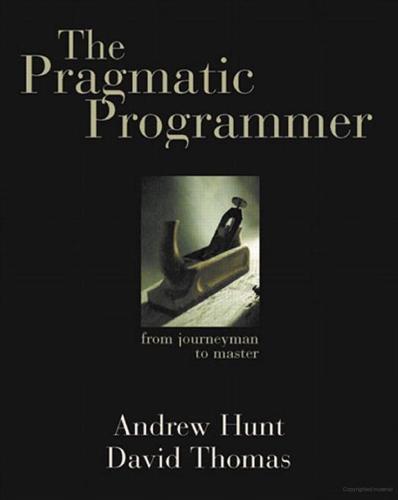
The Pragmatic Programmer
by
Andrew Hunt
and
Dave Thomas
Published 19 Oct 1999
I've studied this problem for a dozen years and found the most promise in a device called a pattern language. In short, a pattern is a solution, and a pattern language is a system of solutions that reinforce each other. A whole community has formed around the search for these systems. This book is more than a collection of tips. It is a pattern language in sheep's clothing. I say that because each tip is drawn from experience, told as concrete advice, and related to others to form a system. These are the characteristics that allow us to learn and follow a pattern language. They work the same way here. You can follow the advice in this book because it is concrete.
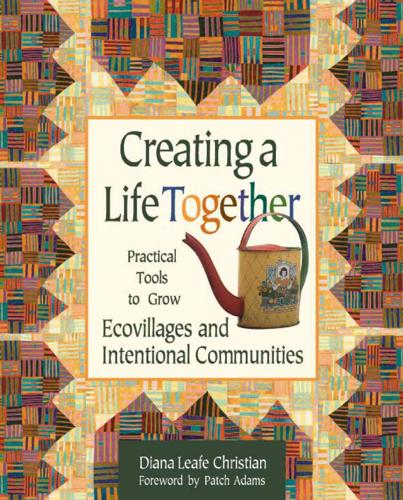
Creating a Life Together: Practical Tools to Grow Ecovillages and Intentional Communities
by
Diana Leafe Christian
Published 1 Jan 2003
What follows is a list of some of the best resources from the site. process, effective meetings, decision-making — covering the wide range of communities in North America from ecovillages to cohousing, plus updates of Communities Directory listings. Website <www.store.ic.org> “A Pattern Language for Villages,” in A Pattern Language: Towns, Buildings, Construction, Christopher Alexander, et. al., Oxford University Press (1976). The Cohousing Handbook: Building a Place for Community, Chris ScottHanson, Hartley & Marks (1996). Practical advice and step-bystep processes for forming a core group and developing and building cohousing communities.
…
They can range from a single structure housing a kitchen/dining area and meeting space, or they can include these functions and more: dance space, daycare facilities, teen hangout rooms, laundry facilities, and workshops, to name a few. Some community buildings feature separate structures for different activities. (A good resource is the “Pattern Language for the Village” in A Pattern Language, by Christopher Alexander et al. See Resources.) A well-designed community building can literally help create cohesiveness, give the feeling of a central “hearth,” and be a source of pleasure, joy, and pride for its members. Here are some design tips to help you design such a center. Put all your eggs in one basket.
…
For better social interaction, to effectively “design for conviviality,” as well as to save money, it works best to have relatively small individual living spaces and larger community buildings with many amenities. Make it prominent. Many communities use architect Christopher Alexander’s principles of “building archetypes” in A Pattern Language for creating a warm and inviting built environment that invites community spirit. One of his principles is that the primary community building in any given location be taller, bigger, or somehow more visually prominent than other structures around it. Put it at the “heart.” It should also be accessible, both visually through “line of sight,” and by footpath, from many other locations around the community.
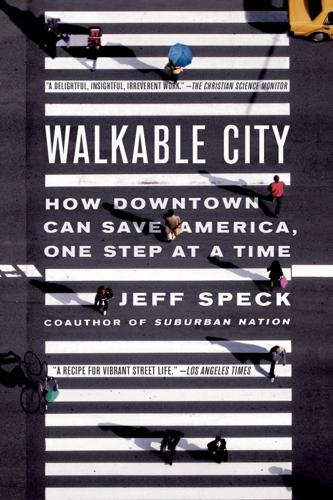
Walkable City: How Downtown Can Save America, One Step at a Time
by
Jeff Speck
Published 13 Nov 2012
Since the key measure of a place’s spatial definition is its height-to-width ratio, wide spaces only feel enclosed when flanked by buildings of considerable height.■ Yet Gehl’s well-earned distaste for large things extends to building heights as well. This stance puts him in the company of some of our most prominent urban thinkers while alienating him from others. In A Pattern Language, the bestselling design book of all time, Christopher Alexander drew the limit at four stories, noting that “there is abundant evidence to show that high buildings make people crazy.”5 The fertile-minded Leon Krier, Luxembourger godfather of the New Urbanist movement, is likewise adamant in his dismissal of skyscrapers, which he terms “vertical cul-de-sacs,” arguing instead for cities limited to four stories, the convenient height for a walk-up.
…
DOT, December 23, 2010. 51. Wendy Koch, “Cities Roll Out Bike-Sharing Programs.” 52. David Byrne, Bicycle Diaries, 278. 53. Lord. STEP 7: SHAPE THE SPACES 1. Thomas J. Campanella, Republic of Shade, 135. 2. Jan Gehl, Cities for People, 4. 3. Ibid., 120, 139, 34. 4. Ibid., 50. 5. Christopher Alexander, A Pattern Language, 115. 6. Gehl, 42. 7. Ibid., 171–73. 8. Jane Jacobs, The Death and Life of Great American Cities, 203. 9. Andres Duany and Jeff Speck, The Smart Growth Manual, Point 10.5. 10. Gehl, 146. STEP 8: PLANT TREES 1. R. S. Ulrich et al., “View Through a Window May Influence Recovery from Surgery.” 2.
…
Andres Duany, Elizabeth Plater-Zyberk, and Jeff Speck, Suburban Nation, 166. 2. Blair Kamin, “Ohio Cap at Forefront of Urban Design Trend.” 3. Andres Duany and Jeff Speck, The Smart Growth Manual, Point 7.8. 4. Rick Reilly, “Life of Reilly: Mile-High Madness.” WORKS CITED BOOKS Alexander, Christopher. A Pattern Language. New York: Oxford University Press, 1977. Arnold, Henry F. Trees in Urban Design, 2nd ed. New York: John Wiley, 1992. Brand, Stewart. Whole Earth Discipline: Why Denser Cities, Nuclear Power, Transgenic Crops, Restored Wetlands and Geoengineering Are Necessary. New York: Penguin, 2009. Buettner, Dan.
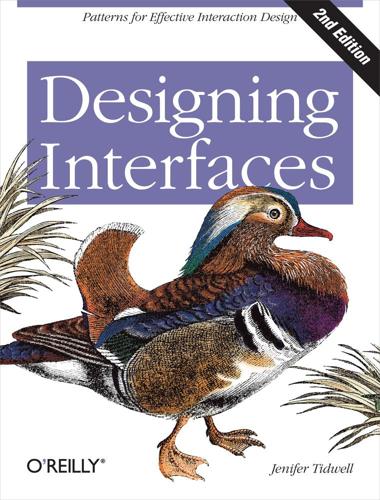
Designing Interfaces
by
Jenifer Tidwell
Published 15 Dec 2010
Some very complete sets of patterns make up a “pattern language.” These patterns resemble visual languages in that they cover the entire vocabulary of elements used in a design (though pattern languages are more abstract and behavioral; visual languages talk about shapes, icons, colors, fonts, etc.). The set in this book isn’t nearly as complete, and it contains techniques that don’t qualify as traditional patterns. But at least it’s concise enough to be manageable and useful. Other Pattern Collections The text that started it all dealt with physical buildings, not software. Christopher Alexander’s A Pattern Language and its companion book The Timeless Way of Building established the concept of patterns and described a 250-pattern multilayered pattern language.
…
Christopher Alexander’s A Pattern Language and its companion book The Timeless Way of Building established the concept of patterns and described a 250-pattern multilayered pattern language. It is often considered the gold standard for a pattern language because of its completeness, its rich interconnectedness, and its grounding in the human response to our built world. In the mid-1990s, the publication of Design Patterns by Erich Gamma, Richard Helm, Ralph Johnson, and John Vlissides profoundly changed the practice of commercial software architecture. This book is a collection of patterns describing object-oriented “micro-architectures.” If you have a background in software engineering, this is the book that probably introduced you to the idea of patterns.
…
Press, 2009) Designing for the Social Web by Joshua Porter (New Riders Press, 2008) Search Patterns: Design for Discovery by Peter Morville and Jeffery Callender (O’Reilly, 2010) And finally, here are the classic patterns books that started the whole concept: The Timeless Way of Building by Christopher Alexander (Oxford University Press, 1979) A Pattern Language by Christopher Alexander, Sara Ishikawa, Murray Silverstein, Max Jacobson, Ingrid Fiksdahl-King, and Shlomo Angel (Oxford University Press, 1977) Design Patterns: Elements of Reusable Object-Oriented Software by Erich Gamma, Richard Helm, Ralph Johnson, and John M. Vlissides (Addison-Wesley Professional, 1994) Index A note on the digital index A link in an index entry is displayed as the section title in which that entry appears.
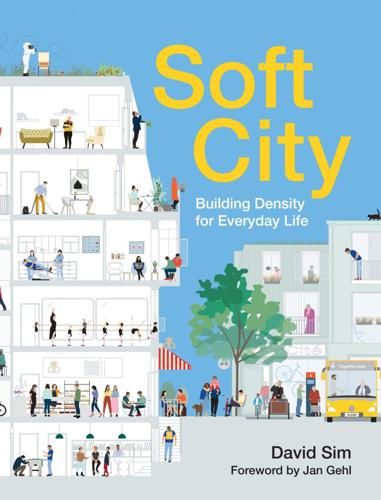
Soft City: Building Density for Everyday Life
by
David Sim
Published 19 Aug 2019
A diversity of light (and ventilation) conditions can potentially accommodate different activities in close proximity, which is desirable in a dense, multifunctional environment. Lighting a space should not only be about the quantity of light, but also the quality of light. For example, natural light from more than one direction is very significant for the human experience inside a building. Christopher Alexander highlights this in A Pattern Language, with pattern number 159: “Light on Two Sides of Every Room.” The quality of light and the human experience is dramatically different when this more complex light is present, influencing how you can read emotions and see facial expressions.27 The smaller dimensions of lower and thinner buildings increase the possibility of having natural light from two sides or even light from above.
…
Living With the Weather 23 On the concept of outdoor life in Scandinavia called Friluftsliv see Maddy Savage, Friluftsliv the nordic concept of getting outdoors (BBC 11 December 2017). 24 City of Copenhagen, Bicycle Account (City of Copenhagen 2006). 25 Numbers for 1986, 1995, 2005 from Jan Gehl, Cities for People (Washington D.C.: Island Press 2010), 146. 2015 numbers from City of Copenhagen, Bylivsregnskab (Public life account) (City of Copenhagen 2015), 6. 26 Christopher Bergland, “Exposure to Natural Light Improves Workplace Performance,” Psychology Today, June 2013. 27 Christopher Alexander, A Pattern Language: Towns, Buildings, Construction (New York: Oxford University Press 1977), pattern 159. 28 International Energy Agency, The Future of Cooling (International Energy Agency, May 2018). 29 Henning Larsen, Micki Aaen Petersen, Mikroklima analyser (Microclimate analysis), Bo01, Västra Hamnen, Malmö, Juni 2018. 30 Henning Larsen, Micki Aaen Petersen, Mikroklima analyser (Microclimate analysis), Bo01, Västra Hamnen, Malmö, Juni 2018. 31 City of Melbourne, Urban Forest Strategy: https://www.melbourne.vic.gov.au/community/parks-open-spaces/urban-forest/Pages/urban-forest-strategy.aspx (accessed 05.12.2018). 32 City of Copenhagen, Climate Adaptation Plan in English, see: https://en.klimatilpasning.dk/media/568851/copenhagen_adaption_plan.pdf (accessed 14 April 2019). 33 See Richard Louv, Last Child in the Woods (Chapel Hill, NC: Algonquin Books 2008).

The Geography of Nowhere: The Rise and Decline of America's Man-Made Landscape
by
James Howard Kunstler
Published 31 May 1993
An office tower gets built in the middle of a five-acre parking lot on a boulevard lined by similar isolated office buildings-who cares how it relates to the rest of Fairfax, Virginia, as long as the cars can get to it? And say, won't ten stories of greenish mirrored glass look spiffy from the Beltway ! Build ing on that philosophical premise was a disaster. 2 5 0 ... B E T T E R P L A C E S Alexander and his colleagues concocted an antidote to this cultural poison. They called it "A Pattern Language. " Here they summarized it nicely in clear prose refreshingly free of jargon. The elements of this language are entities called patterns. Each pattern describes a problem which occurs over and over again in our environment, and then describes the core of the solution to that problem in such a way that you can use this solution a million times over, without ever doing it the same way twice.l This pattern language was a vocabulary for building.
…
Author's interview with John DeGrove, Director of the Florida Atlantic University/Florida International University Joint Center for Environmental and Urban Problems, April 1990. 3. "The Tables Have Turned on Gaming in Atlantic City," The New York Times, Sunday Business Section (December 9, 1990), p. 1. C H A PT E R 1 3 1. 2. 3. 4. 5. 6. 7. 8. 9. Alexander, et aI., A Pattern Language, p. x. Ibid. , pp. 783-84. Author's interview with Andres Duany, May 10, 1990. Edward Gunts, "Plan Meets Reality," Architecture Magazine, December 1991. Author's interview with Elizabeth Plater-Zyberk, May 12, 1990. The other architects involved were Doug Kelbaugh, chairman of the Uni versity of Washington School of Architecture; Robert Small, also of the University of Washington; Harrison Fraker, University of Minnesota; Mark Mack and Daniel Solomon, University of California, Berkeley; Don Prowler, University of Pennsylvania; and David Sellers, in private practice in Ver mont (formerly Yale University).
…
Peter Calthorpe, "The Post-Suburban Metropolis," Whole Earth Review, Winter 1991. Hiss, The Experience of Place, p. 214. 2 8 0 _ Bibliography Alexander, Christopher. The Timeless Way of Building. New York: Oxford University Press, 1979. Alexander, Christopher; Ishikawa, Sara; Silverstein, Murry; et al. A Pattern Language. New York: Oxford University Press, 1977. Arendt, Randall G.; Brabec, Elizabeth A. ; Dodson, Harry L. ; Yaro, Robert D. Dealing with Change in the Connecticut River Valley : A Design Man ual for Conservation and Development. Cambridge : Lincoln Institute of Land Policy, 1989. Banham, Reyner.
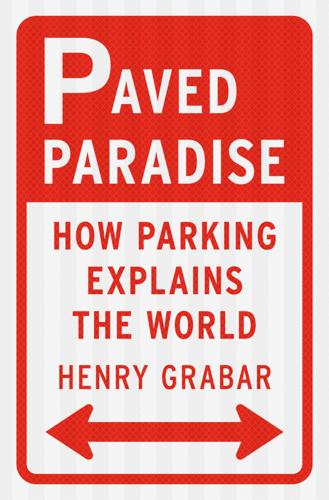
Paved Paradise: How Parking Explains the World
by
Henry Grabar
Published 8 May 2023
By square footage, there is more housing for each car in the United States than there is housing for each person. All this asphalt constitutes a kind of ecology unto itself, changing the way air and water and animals interact with human civilization. It changes the way we behave, too. “The effect of the cars reaches far beyond the cars themselves,” wrote Christopher Alexander in A Pattern Language, his landmark study of human landscapes. “They create a maze of driveways, garage doors, asphalt, and concrete surfaces, and building elements which people cannot use. When the density goes beyond the limit, we suspect that people feel the social potential of the environment has disappeared.”
…
Smith, David B. Belzer, “120 Years of US Residential Housing Stock and Floor Space,” PLoS ONE 10, no. 8 (2015): e0134135, doi.org/10.1371/journal.pone.0134135. Go to note reference in text “maze of driveways”: Christopher Alexander, Murray Silverstein, and Sara Ishikawa, A Pattern Language: Towns, Buildings, Construction (New York: Oxford University Press, 1977), 177. Go to note reference in text The conventional wisdom in Chicago: “Mayor to Crash Gates at Park’s Garage Debut,” Chicago Tribune, August 26, 1954. Go to note reference in text “until that terminal point”: Earl Swift, The Big Roads: The Untold Story of the Engineers, Visionaries and Trailblazers Who Created American Superhighways (Boston: Houghton Mifflin Harcourt, 2011), 243.
…
See citations, parking Parking Today (magazine), 35, 93, 104, 209, 278 Parking Wars (reality show), 39 parklets, 252 park-once strategy, 200–201 Park Slope, Brooklyn, 82 Parma, Ohio, 205 A Pattern Language (Alexander, C.), 71 pavement, effect on environment, 76–79 Pawar, Ameya, 143 The Pearl (housing project), 5–6, 13, 15 pedestrians, in New York, 253–55 Pennsylvania, Philadelphia, 24, 39–40, 75, 95–96, 97–98, 156 Perl, Leon, 4–5 permits, parking, 28, 29, 43, 45 Pershing Square Garage, LA, 173 Philadelphia, Pennsylvania, 24, 39–40, 75, 95–98, 156 The Philadelphia Inquirer (newspaper), 40 Phoenix, Arizona, 74, 81 Pine Street Inn, Boston, 20 placards, parking, 41–42, 45–47, 49, 139 Poetry Garage, Chicago, 113–17 police, 36–37, 46–47, 48–50 policy, parking, 46, 79, 86 Poliente, Abraham, 265 politics, xi, 10, 21, 233, 234, 283 pollution, 78–79, 99 Pompeii, xv Portland, Maine, 54 Portland, Oregon, 207–8, 214, 239–40 Postal Service, U.S., 259 Preckwinkle, Toni, 125 privatization, 123, 127, 134 PRN.

Designing Web Interfaces: Principles and Patterns for Rich Interactions
by
Bill Scott
and
Theresa Neil
Published 15 Dec 2008
Editing content directly on the page (e.g., In-Page Editing, as we discuss in Chapter 1) borrows heavily from the desktop—but has its own unique flavor when applied to a web page. This book explores these unique rich interactions as set of design patterns in the context of a few key design principles. Design Patterns What do we mean by design patterns? Christopher Alexander coined the term "patterns" in his seminal work A Pattern Language: Towns, Buildings, Construction (Oxford University Press) to catalog common architectural solutions to human activities. He described a pattern as: ...a problem which occurs over and over again in our environment, and then describes the core of the solution to that problem... Patterns were later applied to software in the book Design Patterns: Elements of Reusable Object-Oriented Software (Addison-Wesley), by the Gang of Four (Erich Gamma, Richard Helm, Ralph Johnson, and John M.
…
Flickr actually does this by offering an alternate, separate page for editing (Figure 1-4). Figure 1-4. Flickr allows you to also edit a photo's title, description, and tags in a separate page * * * [6] We use the term "design patterns" to denote common solutions to common problems. Design patterns originate from Christopher Alexander's book A Pattern Language (Oxford University Press). You can read a series of essays from me (Bill) and others on design patterns at http://www.lukew.com/ff/entry.asp?347 [7] While the Yahoo! Design Pattern Library (http://developer.yahoo.com/ypatterns/) was being launched, this pattern was not included in the initial set of patterns due to an internal debate over this issue of discoverability.
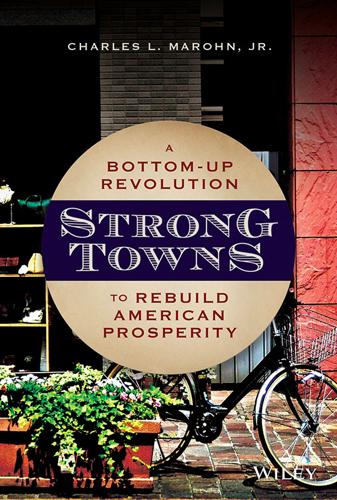
Strong Towns: A Bottom-Up Revolution to Rebuild American Prosperity
by
Charles L. Marohn, Jr.
Published 24 Sep 2019
They were not so close as to feel constrained, but they were not so far that they failed to create an edge. Edges are very important for humans. In our habitats, we are drawn to edges. This is a phenomenon observed by Jane Jacobs in her book The Death and Life of Great American Cities, then elaborated on by Christopher Alexander in A Pattern Language. In public spaces, Jacobs notes that people “stay to the sides,” while Alexander states that people “naturally gravitate toward the edge.” This street in Pompeii provided that opportunity. Biologists call this wall-hugging trait thigmotaxis. Think of a mouse scurrying along the edge of a wall, instinctively fearful of journeying into the center of the room.
…
Index A Accounting, for infrastructure, 70–71 Acre, value per, 135, 138–142 Alexander, Christopher, 8 Altruism, in community living, 6–7, 26 American Society of Civil Engineers (ASCE), 65–67 Amish society, 217 Anderson, Monte, 160–161 Antifragile (Taleb), 193 Anti-fragile systems, 4, 6 Appreciation, for maintenance staff, 180–183 Arnade, Chris, 214–215 ASCE (American Society of Civil Engineers), 65–67 Assessment process, 77 Automobile reliance: development based on, 27–30 and modern city development, 111–112 productivity and, 140 B Barbell investment approach, 148–150, 150f Better Block Foundation, 159 Bezos, Jeff, 102 Bias, confirmation, 69, 74, 183–186 Bicycles, 112 Big box stores: alternative uses of sites of, 169 productivity for, 136–137 Big project mentality, 184–186 The Big Sort (Bishop), 207–208 “Bipartisan Placemaking: Reaching Conservatives” panel, 210 Bishop, Bill, 207–208 The Black Swan (Taleb), 59, 120 Blighted areas, productivity of, 131–134, 140 Boise State University, 126 Boys & Girls Club of Santa Ana, x Brainerd, Minnesota, 16f, 18f development of infrastructure in, 30–31 experimental development pattern in, 125–126 founding and development of, 16–17 productivity at downtown vs. edge of town, 134–138 traditional vs. modern development in, 131–134 Bretton Woods agreement, 90 Brooklyn, New York, 213–214 Brown, Aaron, 211 Brown, Michael, 114 Budgeting, by cities, 50–57 Building code deficiencies, addressing, 194 Buildings, complex vs. complicated, 20–23 Bureaucracy, 172 Burnham, Daniel, 122 Bush, George W., 209 C California, government decision making in, 197–198 Capital investments, return on, 171–172 Carbon-reduction benefits, 74 Carlson, Curtis, 121 “Carlson's Law,” 121 Cash flow: and debt, 98, 187–192, 188f–190f over life cycle of development project, 52–57, 55f, 56f CBO (Congressional Budget Office), 78–80 Centralization, 198 Chaos, order vs., 121–122 Chicken problem, 195 Cities, 37–62 abandonment of, 109–110 accounting for infrastructure by, 70–71 budgeting and growth in, 50–57 contracting of, 154 Detroit, Michigan, 60–62 development of Pompeii, Italy, 5–10 economic stability of modern, 104–106 engineer's view of, 11 experimental development pattern in, 126–127 filling gaps in, 160–163 and illusion of wealth, 57–60 incremental growth in founding of, 15–20 as infinite game, 38–41 and infrastructure, 44–50 maintenance required for infrastructure in, 115 modern development of, 12 revenues and expenses, 41–44 traditional vs. modern development of, 1–3 Cities and the Wealth of a Nation (Jacobs), 101–102 City Council of Santa Ana, ix, x City engineer, 177t City halls, 43–44 City planner, 177t Class: and neighborhoods, 21–22 and re-urbanization, 116 Clinton, Bill, 209 Clinton, Hillary, 63 Cognitive Architecture (Sussman and Hollander), 8 Cognitive discounting, 65 Collaboration, between government officials and citizens, 195–197 Commers, Jon, 45 Common infrastructure, 130 Community living, 199–218 differing opinions in, 206–212 and extended family, 200–201 as infinite game, 39–40 meaning in, 212–218 in neighborhoods, 202–203 in Pompeii, Italy, 6–7 walking in, 203–206 Complex, adaptive systems: human habitats as, 3–4 and incremental growth, 168 incremental growth of, 15–16, 18–19 rational decision making with, 120–123 Complex buildings, 20–23 Complicated buildings, 20–23 Complicated systems, 11–14 Confirmation bias, 69, 74, 183–186 Conflicts, dealing with, 206–212 Congress for the New Urbanism, 210 Congressional Budget Office (CBO), 78–80 Constraints: and economic stability, 93–96 and gold standard, 90 growth as, 100 prudent, for investments, 164–168 removal of, in modern world, 59–60, 96 Construction costs, 136–137 Consumption, 215–216 Costa Rica, 126–127 The Crash Course (Martenson), 108 Critical systems, 182–183 Cross-generational civic collaboration, 187 D Dallas, Texas, 159 Darwin, Charles, 8 The Death and Life of Great American Cities (Jacobs), 8 Debt: and cash flow, 98 for federal government, 186 for government, 96–100 for local government, 113–114 for place-oriented government, 186–192 for projects with quality-of-life benefits, 187 for state government, 113–114 Debt to income ratio, 97 Decision making: rational, see Rational decision making subsidiarity in, 195–198 Default, on municipal debt, 191 Deneen, Patrick, 211 Density, as urban planning metric, 128–129 Depression economics, 86–89 Detroit, Michigan, 60–62 land values in, 24 renewal of urban, 117–119 Development projects: cash flow over life cycle of, 52–57, 53f, 55f, 56f decisions about failing, 115–120 Diamond, Jared, 58, 59, 84 Dig Deep, 211 Donjek, 45 Downtown, productivity of, 134–140, 139t, 143–144 Duany, Andres, 195 Duggan, Mike, 119 Duncanville, Texas, 160 E Economic development department, 178t Economics: and benefits of infrastructure spending, 72–73 in depressions, 86–89 Economic stability, 83–106 and auto-oriented development, 29–30 and constraints, 93–96 creating, 85–86 and depression economics, 86–89 and focus on growth, 100–102 following World War II, 89–91 and government debt, 96–100 growth vs. wealth, 102–104 of modern cities, 104–106 and post-war boom, 91–93 risk management strategies for, 83–85 Edges, 7–8 Edges of city: center vs., 28 city infrastructure necessary for, 115 productivity of, 134–138, 143–144 Efficiency, designing for, 174–176 Ehrenhalt, Alan, 116 Empire State Building (New York, New York), 129 Employment, in productive places, 133 England, 83 Expenses, and revenues, 41–44 Extended family, 200–201 F Failure, slow, 110–115 Failure to Act (ASCE report), 65–67 Family, extended, 200–201 Fannie Mae, 92 Farmers, risk management strategies of, 83–84 Federal Funds Rate, 97 Federal government: debt for, 186 impact of infrastructure on, 79 Federal Housing Administration (FHA), 89, 92 Federal Reserve, 99 Feedback, in local governments, 173–174 Ferguson, Missouri, 93, 114 FHA (Federal Housing Administration), 89 Financial status, local government's understanding of, 190–191 Finished states, neighborhoods built to, 21–23 “First ring” suburbs, 94 Form-based codes, 193–194 Fragile systems, 4 Franchises, productivity of, 133–134 Freddie Mac, 92 Future, predicting needs for, 19–20, 120–121 G Gaps, in cities, 160–163 Garcia, Anthony, 158 Gas tax, 75 Gawron, Stephen, 161 Gehl, Jan, 8 “General Theory of Walkability,” 206 Gentrification, of urban neighborhoods, 117 Goals, of individuals vs. communities, 40–41 Goland, Carol, 84 Gold reserves, 94 Gold standard, as basis for trade, 90 Government debt, 96–100 Government policies, prioritizing traffic, 29 Great Depression, 87–89, 191 The Great Inversion and the Future of the American City (Ehrenhalt), 116 Great Society, 93 Growth: economic stability and focus on, 100–102 in municipalities, 50–57 as objective of local governments, 176 wealth vs., 102–104 H Haidt, Jonathan, 208, 209, 215 Hardship, response to, 172–174 Hasidic Judaism, 213–214, 217 Hemingway, Ernest, 4 Henwood, Doug, 79 Hierarchies, in local government, 174–176 Highland neighborhood (Shreveport, Louisiana), 220 Highland Park (Shreveport, Louisiana), 220 High land values, 27–30 High Point, North Carolina, 161 Highway bypass corridor, 134–138 Hollander, Justin B., 8, 9 Homeless shelters, xi Homes, changing, 20 Hoover, Herbert, 87 Horizontal expansion, in California, 197 Housing: in California, 197–198 post-war changes in, 92 preference for single-family, 144–145 Housing authority, 178t How to Live in a World We Don't Understand (Taleb), 59 Human habitats, 1–14 as complex, adaptive systems, 3–4 in North America, 1–3 spooky wisdom in, 5–10 as systems that are complicated, 11–14 Hunter-gatherer existence, 58 Hurricane Katrina, 102–103 Hurricane Rita, 102–103 I Illusion of Wealth: and constant maintenance, 152 human response to, 57–60 Illusion of Wealth phase of development, 143 Improvement to Land (I/L) Ratio, 25, 25f, 117 Improvement value, 23–25, 25f Incentives, to fix problems, 113 Income taxes, 72 Incremental changes, implementing, 122–123, 156–157 Incremental growth, 15–35 and complex, adaptive systems, 168 complex vs. complicated buildings in, 20–23 constraints on, 164 and founding of cities, 15–20 good and bad development in, 34–35 and high land values, 27–30 and neighborhood renewal, 23–27 private and public investment in, 30–34 in traditional habitat development, 2 Infill projects, 160 Infrastructure, 63–81 accounting for, 70–71 and American Society of Civil Engineers, 65–67 calculating returns on investment for, 67–69 Congressional Budget Office on, 78–80 development of, 30–34 as investment, 41–42 in modern development, 32 and municipalities, 44–50 perception of need for more, 63–65 ratio of private to public investment in, 129–130 real return on investment, 74–78 secondary effects of, 72–74 Infrastructure Cult: development of, 65–67 paper returns calculated by, 69 Insolvency, 187–192 Interstate highway system, 92 Investment(s), 147–170 barbell investment approach, 148–150 capital, 171–172 conventional vs. strong towns thinking about, 185–186, 186t in filling gaps in cities, 160–163 impact of regulations on, 194 infrastructure as, 41–42 little bets, 150–160 low-risk investments with steady returns, 150–155 prudent constraints for, 164–168 public and private, 30–34, 31f, 32f returns on, see Return on investment in Suburban Retrofit, 168–169 Italy, walking in, 203–204 J Jacobs, Jane, 8, 101–102 Japan, 76 Jimmy's Pizza, 161–162 Job creation, 49, 72–73 Johnson, Neil, 12, 13 Junger, Sebastian, 216–217 K Keynes, John Maynard, 88 Keynesian economic policies, 88 Krugman, Paul, 63, 78 Kunstler, James, 110–111 L Lafayette, Louisiana, 101, 141–144, 151 Landau, Moshe, 213–214, 217 Land value: in declining suburbs, 113 and interstate highway project, 92 and neighborhood renewal, 23–25, 25f in neighborhoods with different types of properties, 165–167, 165f, 166f and suburban development, 27–30 Learning, from previous local investments, 187 Legacy programs, 173 Lifestyle choices, 202, 205–206 “Lifestyle enclaves,” 208 Little bets, 16–18, 150–160 Local economy: as basis for national economy, 101–102 national vs., 103 Local government: changes in, to maintain economic stability, 105–106 debt taken on by, 113–114 funded by state government, 95 impact of infrastructure on, 79–80 profit run by, 37–38, 147 relationship of state and, 198 Long declines, 110–115 “Long emergency,” 110–111 Long Recession of the 1870s, 77 Los Angeles, California, xi Lovable places, 10 Low-risk investments, with steady returns, 150–155 Lydon, Mike, 158 M Maintenance: ability to keep up with, 109 cash-flow debt to cover, 188–192, 188f–190f of development projects, 52–57 of infrastructure, 46–49 need for constant, 151–154 in place-oriented government, 180–183 required for single-family homes, 112 Maintenance department, 179t Manhattan, New York, 24 Martenson, Chris, 108 Meaning, life of, 212–218 Middle class, 92, 93, 144–145 Milan, Italy, 164 Mills Fleet Farm, 134–137 Minicozzi, Joseph, 138–140, 161 “Minnesota Miracle,” 95 Mixed-use neighborhoods, 163, 169 Modern city development: as high-risk investments, 149 as lead by pubic investment, 34–35 productive places in, 131–134 Modern Monetary Theory, 99 Mortgages, during Great Depression, 88–89 Mouzon, Steve, 10, 113 Muskegon, Michigan, 161 N National Association of Home Builders, 136 National economy, local vs., 103 Natural disasters, 102–103 Neighborhoods: abandonment of, 109–110 built to finished states, 21–23 changing in post-war era, 92–93 community living in, 202–203 decline of, 113 gentrification of urban, 117 mixed-use, 163, 169 renewal of, and incremental growth, 23–27 responses to improvements in, 158 structured around religions, 214 in transition sections of Detroit, 118 Neighbors, being involved with, 202–203 New Deal economics, 87–88 New Orleans, Louisiana, 102, 182 Nixon, Richard, 94 Noncritical systems, 182 O Oak Cliff neighborhood (Dallas, Texas), 159 Obama, Barack, 63 Obesity, among Pacific Islanders, 58–59 Options Real Estate, 160 Orange County, California, xi–xii Order, chaos vs., 121–122 The Original Green (Mouzon), 10, 113 Oroville dam (California), 182 Oswego, New York, 152 Oswego Renaissance Association, 152 P Pacific Islanders, 58–59, 183–185 Paper returns on investment, 67–69 Paradox of Avarice, 104 Paradox of Thrift, 88, 104 Pareidolia, 8–9, 9f Parks department, 178t Party analogy, 34–35 A Pattern Language (Alexander), 8 Pension funds, 56–57, 70, 98 Pequot Lakes, Minnesota, 44–46 Perception, of need for more infrastructure, 63–65 Personal preferences, 144–145 Peru, 84 Place-oriented government, 171–198 and confirmation bias, 183–186 designed for efficiency, 174–176 focus on broad wealth creation by, 176–180 maintenance as priority for, 180–183 and regulations, 192–194 response to hardship by, 172–174 subsidiarity in, 195–198 understanding of debt by, 186–192 Political differences, 207 Pompeii, Italy, 5–10 Post-war boom: and economic stability, 91–93 modern city development established in, 12 Power, subsidiarity principle and, 196–198 Prayer of Saint Francis, 218 Prioritization, of maintenance, 180–183 Private development, 40 Private investment: private to public investment ratio, 129–130 public and, 30–34, 31f, 32f Private sector (businesses): response to economic hardship in, 172–173 small, see Small businesses Problem solving, 13–14 Productive places, 125–146 downtown vs. edge of town, 134–138 in past, 125–127 and personal preferences, 144–145 productivity calculations for, 128–130 return on investment, 141–144 traditional vs. modern development in, 131–134 value per acre, 138–141 Productivity, calculations of, 128–130 Project teams, 179–180 Property taxes, 49 Property value, 23–25, 25f Public health, and walking neighborhoods, 205 Public investment: private and, 30–34, 31f, 32f private to public investment ratio, 129–130 returns required for, 147 Public safety department, 179t Q Quality-of-life benefits, 187 Quantitative Easing, 99 R Railroad companies, 77 Rational decision making, 107–123 about failing development systems, 115–120 about long declines, 110–115 within complex, adaptive system, 120–123 and lack of single solution, 107–110 Real return on investment, 74–78 Redevelopment, financial productivity after, 131–134, 139–140, 139t Redundant systems, 182 ReForm Shreveport, 219, 220 Regulations: from place-oriented government, 192–194 and subsidiarity principle, 195–198 Repealing regulations, 192–193 Republican Party, 209 Request for proposal (RFP), 50 Residents, learning concerns of, 156–157 Resources: assumption of abundance of, 12–14 wasted, in modern development, 19 Retreats, strategic, 108–109 Return on investment, 141–144 calculating, for infrastructure, 67–69 for capital projects, 171–172 in cities, 44 and debt taken on by local governments, 187 low-risk investments with steady, 150–155 paper, 67–69 real, 74–78 social, 78–79 Revenues, and expenses, 41–44 RFP (request for proposal), 50 The Righteous Mind (Haidt), 208 Risk management strategies, 83–85 Roaring Twenties, 87 Roberts, Jason, 159 Roosevelt, Franklin, 87, 88 Rotary International, 203 S St.
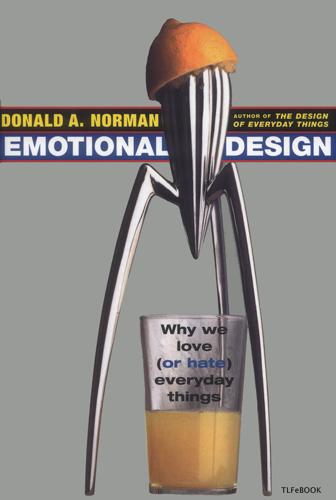
Emotional design: why we love (or hate) everyday things
by
Donald A. Norman
Published 10 May 2005
Some of the examples in this book may have already followed this trajectory: the Mini Cooper automobile, so charming and cute to the reviewers at the time of this book's writing, may look dated, oldfashioned, and dull by the time you flip through these pages—so much so that you may wonder how I came to choose it as an example. The concern for the diminishing impact of familiarity has led some designers to propose hiding beautiful views, lest continual encounter might diminish their emotional impact. In the book A Pattern Language, the architect Christopher Alexander and his colleagues describe 253 different design patterns derived from their observations and analyses. These patterns provide the basis of their guidelines for "a timeless way of building," which structures buildings in ways calculated to enhance the experience of the people living within them.
…
Quotation is from chapter 3, "The Beauty of Life," originally delivered before the Birmingham Society of Arts and School of Design, February 19, 1880.) TLFeBOOK This page intentionally left blank TLFeBOOK References Alessi, A. (2000). Creating Juicy salif. Product brochure accompanying the Special Anniversary Edition 2000 of the Juicy Salif. Crusinallo, Italy: Alessi. Alexander, C., Ishikawa, S., & Silverstein, M. (1977). A pattern language: Towns, buildings, construction. New York: Oxford University Press. Ashby, F. G., Isen, A. M., & Turken, A. U. (1999). A neuropsychological theory of positive affect and its influence on cognition. Psychological Review, 106, 529-550. Asimov, I. (1950). I, Robot. London: D. Dobson. (Reprinted numerous times; see: Asimov, I. [1983]).

Smart Cities: Big Data, Civic Hackers, and the Quest for a New Utopia
by
Anthony M. Townsend
Published 29 Sep 2013
It’s tempting to think that new gadgets always offer better solutions to old problems. But they are just another set of tools in an already well-equipped box. One need only open up Christopher Alexander’s monumental book A Pattern Language to understand just how big that toolbox is. The result of a decade’s worth of painstaking research, it is a fascinating distillation of humanity’s built legacy, describing over two hundred traditional architectural and urban design tropes from cities around the world. What A Pattern Language argues is that most urban design problems were solved long ago by ancient builders. We have but to borrow from our ancestors, and many problems can be adequately addressed simply by conventional design.
…
As a remedy, over the next decade Alexander and his colleagues studied traditional cities around the world, distilling their timeless design elements—“the unchanging receptacle in which the changing parts of the system . . . can work together,” as he had described the corner in Berkeley.2 The results, published in 1977 as A Pattern Language, were a crib sheet for lattice-friendly city building. Standing outside the St. Mark’s Ale House once again in 2011, almost ten years to the day after I first encountered Dodgeball inside, I browsed the East Village’s lattice with my iPhone using Dennis Crowley’s newest app, Foursquare. Alexander’s ideas about trees, lattices, and patterns have lingered on the margins of architecture and urban design since the 1970s.

Green Metropolis: Why Living Smaller, Living Closer, and Driving Less Are Thekeys to Sustainability
by
David Owen
Published 16 Sep 2009
Stores and other businesses can’t exist without vehicles to serve them, and the rather specialized physics of pedestrianism doesn’t automatically cause walking to expand to fill any space that is provided for it. Christopher Alexander, Sara Ishikawa, and Murray Silverstein—architects who were associated with the Institute of Environmental Structure at the University of California at Berkeley—wrote, in their influential 1977 book, A Pattern Language , “It is common planning practice to separate pedestrians and cars. This makes pedestrian areas more human and safer. However, this practice fails to take account of the fact that cars and pedestrians also need each other: and that, in fact, a great deal of urban life occurs at just the point where these two systems meet.
…
Simonsick et al., “Measuring Higher Level Physical Function in Well-Functioning Older Adults,” Journal of Gerontology: Medical Sciences, October 2001, pp. 644-49. 5 Slater, “Walk the Walk.” 6 Ben Harder, “Weighing In on City Planning,” Science News, January 20, 2007. 7 Jane Jacobs, The Death and Life of Great American Cities (New York: Vintage Books, 1992; originally published 1961), p. 259. 8 Jacobs, Death and Life, pp. 265-66. 9 John Holtzclaw, “Curbing Sprawl to Curb Global Warming,” Sierra Club, http://www.sierraclub.org/sprawl/articles/warming.asp. 10 Douglas Farr, Sustainable Urbanism: Urban Design with Nature (Hoboken: John Wiley & Sons, 2008), p. 21. 11 Calvin Trillin, “Rudy Giuliani, Proctor of New York,” Time, March 2, 1998. 12 See Peter Newman and Jeffrey Kenworthy, Sustainability and Cities: Overcoming Automobile Dependence (Washington, D.C.: Island Press, 1999), p. 147 and elsewhere. There is also much useful information about traffic calming here: http://www.trafficcalming.org/. 13 Christopher Alexander et al., A Pattern Language: Towns, Buildings, Construction (New York: Oxford University Press, 1977), p. 271. 14 William Neuman and Fernanda Santos, “On 3 Days in August, City Will Try No-Car Zone,” The New York Times, June 17, 2008. 15 Cristina Milesi et al., “Mapping and Modeling the Biogeochemical Cycling of Turf Grasses in the United States,” Environmental Management , September 2005, pp. 426-38. 16 Elizabeth Kolbert, “Turf War,” The New Yorker, July 21, 2008. 17 Richard Louv, “Leave No Child Inside,” Orion, March/April, 2007, available here: http://www.orionmagazine.org/index.php/articles/article/240/. 18 David Biello, “Are Americans Afraid of the Outdoors?”
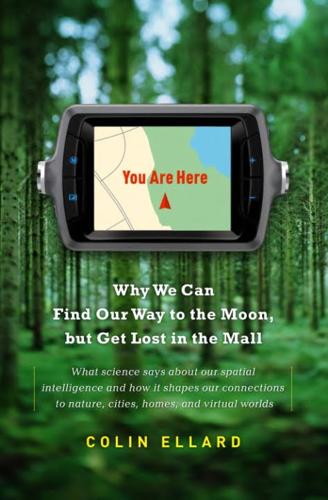
You Are Here: Why We Can Find Our Way to the Moon, but Get Lost in the Mall
by
Colin Ellard
Published 6 Jul 2009
In her insightful book on the evolution of house design, House Thinking, Winnifred Gallagher suggests that some successful architects have a strong intuitive sense of the power of prospect and refuge.5 Frank Lloyd Wright, for example, was fond of building alcoves with low ceilings, especially in cozy spots near the hearth. In terms of primitive survival, a sheltered spot near the fireplace must be considered as the archetypal refuge from which to look out on the grand prospects offered up by the rest of the house. Similarly, Christopher Alexander, in A Pattern Language, his encyclopaedic recipe book for successful city, town, neighborhood, and house planning, suggests varied ceiling heights as an important design principle, particularly in areas of quiet repose such as alcoves in bedrooms designed to contain beds.6 In the same way that house stagers may have some intuition for what attracts buyers to a property, good designers and architects have strong sensibilities for how the aesthetics of space can contribute to successful and comfortable abodes.
…
Jay Appleton’s arguments about the importance of prospect and refuge to the human psyche are laid out in his book The Experience of Landscape (Wiley: Hoboken, NJ, 1975). 5. Winnifred Gallagher’s House Thinking, a delightful tour through the main parts of a modern house, is filled with much interesting material on the history and philosophy of house building (Harper Perennial: New York, 2007). 6. Christopher Alexander, in A Pattern Language: Towns, Building, Constructions (Oxford University Press: Oxford, 1977), lays out an encyclopedic set of intuitive rules governing how welcoming and functional space should be organized. The theory underlying the rules is described in several volumes, including The Timeless Way of Building (Oxford University Press: Oxford, 1979). 7.
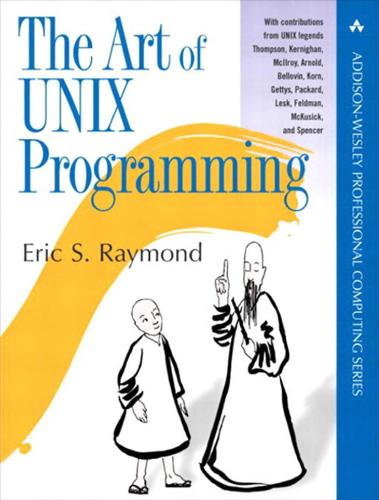
The Art of UNIX Programming
by
Eric S. Raymond
Published 22 Sep 2003
I didn't, because I disagree with some of the implicit central dogmas of the movement and don't feel the need to use all its formal apparatus or accept its cultural baggage. Nevertheless, my approach has certainly been influenced by Christopher Alexander's work[3] (especially The Timeless Way of Building and A Pattern Language), and I owe the Gang of Four and other members of their school a large debt of gratitude for showing me how it is possible to use Alexander's insights to talk about software design at a high level without merely uttering vague and useless generalities. Interested readers should see Design Patterns: Elements of Reusable Object-Oriented Software [GangOfFour] for an introduction to design patterns.
…
Note that this bestiary does not include GUI design patterns (though it includes a design pattern that can use a GUI as a component). There are no design patterns in graphical user interfaces themselves that are specifically native to Unix. A promising beginning of a discussion of GUI design patterns in general can be found at Experiences — A Pattern Language for User Interface Design [Coram-Lee]. Also note that programs may have modes that fit more than one interface pattern. A program that has a compiler-like interface, for example, may behave as a filter when no file arguments are specified on the command line (many format converters behave like this).
…
[Cooper] Alan Cooper. The Inmates Are Running the Asylum. Sams. 1999. ISBN 0-672-31649-8. Despite some occasional quirks and crotchets, this book is a trenchant and brilliant analysis of what's wrong with software interface designs, and how to put it right. [Coram-Lee] Tod Coram and Ji Lee. Experiences — A Pattern Language for User Interface Design. 1996. Available on the Web. [DuBois] Paul DuBois. Software Portability with Imake. O'Reilly & Associates. 1993. ISBN 1-56592-055-4. [Eckel] Bruce Eckel. Thinking in Java. 3rd Edition. Prentice-Hall. 2003. ISBN 0-13-100287-2. Available on the Web. [Feller-Fitzgerald] Joseph Feller and Brian Fitzgerald.

Whole Earth: The Many Lives of Stewart Brand
by
John Markoff
Published 22 Mar 2022
People like Hillis and William Rawn, a Boston architect who specialized in designing for reuse, became part of a wide-ranging conversation mostly carried out by email. Nobody, however, was as valuable as Brian Eno. Brand had discovered Eno when the musician appeared at the San Francisco Exploratorium in 1988. During a lecture, Eno mentioned how important Alexander’s A Pattern Language was to his thinking, and afterward Brand tried to reach him backstage to tell him he not only shared a passion for Alexander but could introduce the two. Guards kept him away, however, and it wasn’t until a year later that they would meet at a Global Business Network meeting. They quickly formed an intense friendship.
…
(How Buildings Learn would also include several uniquely Brandian touches, including the author’s address, on the premise that “publishers are ill-equipped to forward mail and authors need contact from readers to make corrections for later printings and to make things happen in the real world.”) After seven years of research and writing, How Buildings Learn: What Happens After They’re Built was published in 1994. As Christopher Alexander’s A Pattern Language and Jane Jacobs’s The Death and Life of Great American Cities had for their respective authors, How Buildings Learn established Brand as an independent and original thinker on design, urbanism, and ingenuity. Of all five of his books, this would be the one in which he would take the most pride.

Intertwingled: Information Changes Everything
by
Peter Morville
Published 14 May 2014
It’s part of the timeless way of building that Christopher Alexander draws upon to generate the quality without a name.xlvii In planning Eishin Gakuen, a combined college and high school he built outside Tokyo in the 1980s, Alexander used many tools to extend cognition. First, instead of simply interviewing students and teachers, he invited them to co-create a pattern language – a word-picture that describes the wholeness of a place – since “it is immensely hard to help people tell you what they want.”xlviii Together they sketched out 110 essential patterns for the campus, including: 2.2 The Small Gate marks the outer end of the Entrance Street. It is a small, imposing building, which has height and volume.

97 Things Every Programmer Should Know
by
Kevlin Henney
Published 5 Feb 2010
His work focuses on patterns and architecture, programming techniques and languages, and development process and practice. He has been a columnist for various magazines and online publications, including The Register, Better Software, Java Report, CUJ, and C++ Report. Kevlin is coauthor of two volumes in the Pattern-Oriented Software Architecture series: A Pattern Language for Distributed Computing and On Patterns and Pattern Languages (Wiley). He also contributed to 97 Things Every Software Architect Should Know. Chapter 17 Chapter 80 Chapter 81 Kirk Pepperdine Kirk Pepperdine works as an independent consultant offering Java performance-related services.
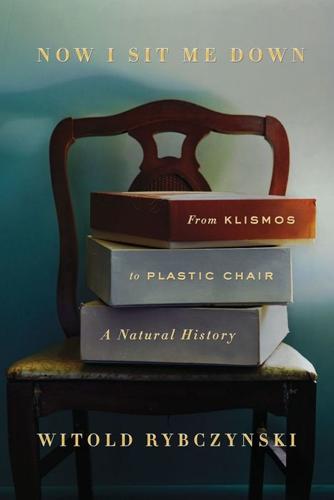
Now I Sit Me Down: From Klismos to Plastic Chair: A Natural History
by
Witold Rybczynski
Published 22 Aug 2016
A Tool for Sitting A detailed description of François Boucher’s Le déjeuner is contained in What Great Paintings Say: Volume 2 (Taschen, 2003) by Rose-Marie and Rainer Hagen. George Kubler’s penetrating study is The Shape of Time: Remarks on the History of Things (Yale University Press, 1962). Christopher Alexander’s observation on furniture is from A Pattern Language: Towns, Buildings, Construction (Oxford University Press, 1977). 2. If You Sit on It, Can It Still Be Art? Jean-François Oeben’s mechanical dressing table is discussed by André Boutemy in “Les Table-Coiffeuses de Jean-François Oeben,” Bulletin de la Société de l’histoire de l’art français (1962).
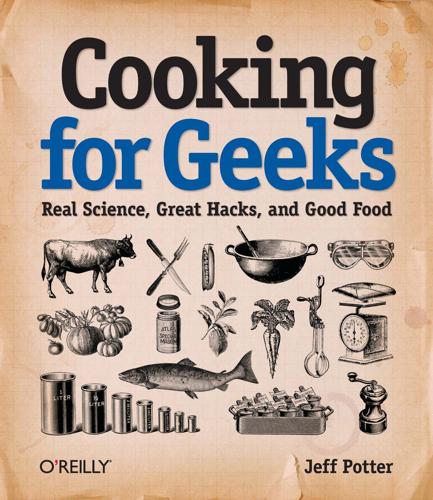
Cooking for Geeks
by
Jeff Potter
Published 2 Aug 2010
This isn’t to say the three counter sections will always be used for those three functions, but as a rule of thumb, having three work surfaces of sufficient length (and depth!) seems to make cooking easier. Note The 3 × 4 counter rule is a slight variation on the "Cooking Layout" design pattern from Christopher Alexander et al.’s A Pattern Language: Towns, Building, Construction (Oxford; see p. 853). It’s a great book that examines the common design patterns present in good architecture and urban development. If your current kitchen setup violates the three-counter, four-feet rule, see if you can come up with a clever way to extend a countertop or create a work surface.
…
in recipes, Picking a Recipe organic foods, Seasonal Method Oskay, Windell, Making ice cream osmosis salt and, Salt sugar and, Sugar Ossau-Iraty (cheese), Seasonal Method oven overclocking, High-heat ovens and pizza oven spring, Yeast in breads Oven-Cooked Barbeque Ribs, Liquid Smoke: Distilled Smoke Vapor ovens calibrating using sugar, Approaching the Kitchen high-heat, Sous Vide Cooking, Blowtorches for crème brûlée improving recovery time, Approaching the Kitchen regulating heat, Approaching the Kitchen oxygen bacterial growth and, Foodborne Illness and Staying Safe FAT TOM acronym, Foodborne Illness and Staying Safe liquid nitrogen and, Dangers of liquid nitrogen yeast and, Yeast in beverages oxymyoglobin, How to Prevent Foodborne Illness Caused by Bacteria oyster knife, Knives O’Reilly, Tim, Baking Powder P palate cleansers, Taste (Gustatory Sense) pan searing (see ) Slow-Cooked Short Ribs, 154°F / 68°C: Collagen (Type I) Denatures pancake recipes Buttermilk Pancakes, Baking Soda Pancakes, Picking a Recipe pans, heating, Reading Between the Lines papain (enzyme), 154°F / 68°C: Collagen (Type I) Denatures par-baking pizza, Pizza par-cooking, 310°F / 154°C: Maillard Reactions Become Noticeable parasites foodborne illnesses and, How to Prevent Foodborne Illness Caused by Parasites freezing, How to Prevent Foodborne Illness Caused by Parasites, Sous Vide Cooking pH levels and, Acids and Bases trichinosis and, Wet brining paring knife, Knives Parkinson’s Law, Kitchen Pruning parma torte, Regional/Traditional Method pasteurization defined, Foodborne Illness and Staying Safe eggs and, The 30-Minute Scrambled Egg food safety and, How to Prevent Foodborne Illness Caused by Bacteria sous vide cooking and, Foodborne Illness and Sous Vide Cooking, Chicken and other poultry surface contamination and, How to Prevent Foodborne Illness Caused by Bacteria pastry chefs, 356°F / 180°C: Sugar Begins to Caramelize Visibly, Whipped Cream, Playing with Chemicals A Pattern Language (Alexander), Uniform Storage Containers peanut allergies, Ingredients to avoid Pear Sorbet, Smell (Olfactory Sense) PEBKAC-type errors, Know your type pectin improving mouth-feel, Making Gels: Starches, Carrageenan, Agar, and Sodium Alginate making, 158°F / 70°C: Vegetable Starches Break Down making jam, Baking Powder starchy vegetables and, 158°F / 70°C: Vegetable Starches Break Down pepper grinders, Unitaskers pepperminty odor, Analytical Method perceptions, reasons for cooking, Functional Fixedness Perfumer’s Compendium (Allured), Analytical Method perishable foods, storage tips, Kitchen Equipment PFOA, Pots and pans pH scale about, Baking Soda, Acids and Bases food additives and, E Numbers: The Dewey Decimal System of Food Additives sodium citrate and, Making gels: Sodium alginate pickling, flash, Chocolate Pie Dough, Gluten pinch (as measurement), Bitter piperine, Combinations of Tastes and Smells pizza, Pizza high-heat ovens and, Blowtorches for crème brûlée Pizza Dough—No-Knead Method, Pizza Pizza Dough—Yeast-Free Method, Baking Powder pizza stones, Approaching the Kitchen, Yeast in breads, Pizza plasmolysis, Salt, Sugar plastic storage bags, Water heaters Playing with Fire and Water blog, Commercial Hardware and Techniques 1-p-methene-8-thiol, Smell (Olfactory Sense) Poached Pears in Red Wine, 158°F / 70°C: Vegetable Starches Break Down poaching, Sous Vide Cooking (see also ) Oven-Poached Eggs, The 30-Minute Scrambled Egg Poached Pears in Red Wine, 158°F / 70°C: Vegetable Starches Break Down Salmon Poached in Olive Oil, 104°F / 40°C and 122°F / 50°C: Proteins in Fish and Meat Begin to Denature polar bonds, Alcohol, Making Foams: Lecithin Pollan, Michael, A Few Words on Nutrition, Seasonal Method polymer fume fever, Pots and pans PolyScience, Making ice cream popcorn lung, Smell (Olfactory Sense) Popovers, Whipped Cream poppy seed bagels, Cooking for Others Pork Chops Stuffed with Cheddar Cheese and Poblano Peppers, Wet brining pork, trichinosis and, Wet brining portion control, A Few Words on Nutrition post-mortem proteolysis, 104°F / 40°C and 122°F / 50°C: Proteins in Fish and Meat Begin to Denature potassium bicarbonate, Baking Soda potatoes Roasted Potatoes with Garlic and Rosemary, Seasonal Method Rosemary Mashed Potatoes, 158°F / 70°C: Vegetable Starches Break Down Skillet Fried Potatoes, 310°F / 154°C: Maillard Reactions Become Noticeable pots and pans, Cutting boards acidity in foods and, Reading Between the Lines, Pots and pans buttering, Adapt and Experiment Method cladded metals, Pots and pans hanging up, Counter Layout hot spots, Pots and pans organizing, Kitchen Organization splatter guards, Bar towels thermal conductivity of, Pots and pans, Methods of Heat Transfer types of, Cutting boards, Kitchen Pruning Potter’s Corollary to Parkinson’s Law, Kitchen Pruning Poulette Sauce, Adapt and Experiment Method poultry (see ) Powdered Brown Butter, "Melts" in your mouth: Maltodextrin Powell, Doug, How to Prevent Foodborne Illness Caused by Parasites Pralus, George, Sous Vide Cooking prepping ingredients, Calibrating Your Instruments, Thermometers and timers preserving foods Lime Marmalade, Sugar Preserved Lemons, Wet brining with salt, Traditional Cooking Chemicals, Dry brining, Wet brining with sugar, Sugar pressure cooking, Convection, 310°F / 154°C: Maillard Reactions Become Noticeable, Stock, broth, and consommé probe thermometer, Avoid PEBKAC-type errors: RTFR!

Radical Cities: Across Latin America in Search of a New Architecture
by
Justin McGuirk
Published 15 Feb 2014
This particular model was designed to be industrially produced and to provide enough courtyards so that owners could extend without losing light and air. But each typology reflects the particular preoccupations of its architect. Christopher Alexander, who went on to make his name with the hugely successful book A Pattern Language, spent two weeks living in a barriada before designing his house. He was a meticulous researcher of behaviour, and he observed that Peruvians apparently prefer open spaces that they can divide up with curtains to create temporary rooms. The house I visit, owned by a man who keeps fighting cocks on the roof, has indeed kept the ground floor as an open-plan space, and has extended the dining room into the rear garden.

The Perfect House: A Journey With Renaissance Master Andrea Palladio
by
Witold Rybczynski
Published 2 Sep 2002
Dan Cruikshank, “Jewel in the Crown,” Perspectives, May 1994, 34–38. 3. Richard Haslam, “Villa Saraceno, Veneto, Italy,” Country Life, October 6, 1994, 45. 4. Andrea Palladio, The Four Books of Architecture, trans. Isaac Ware (New York: Dover Publications, 1965), 50–51. 5. Christopher Alexander et al., A Pattern Language: Towns, Buildings, Construction (New York: Oxford University Press, 1977), 877–79. 6. Andrea Palladio, Four Books on Architecture, trans. Robert Tavernor and Richard Schofield (Cambridge, Mass.: MIT Press, 1997), 59. 7. Ibid. 8. Johann Wolfgang von Goethe, Italian Journey, trans. W. H. Auden and Elizabeth Mayer (San Francisco: North Point Press, 1982), 47. 9.
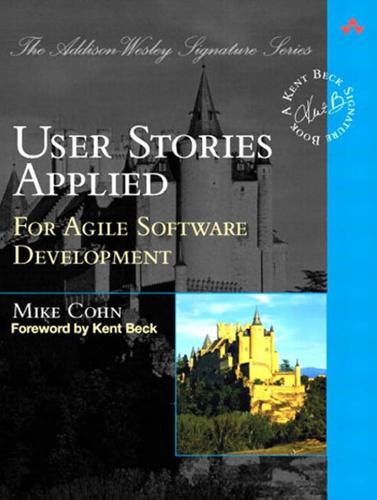
User Stories Applied: For Agile Software Development
by
Mike Cohn
Published 1 Mar 2004
Beck, Kent. Extreme Programming Explained: Embrace change. Boston: Addison-Wesley, 2000. Beck, Kent. Test Driven Development. Reading, Mass.: Addison-Wesley, 2003. Beck, Kent, and Martin Fowler. Planning Extreme Programming. Reading, Mass.: Addison-Wesley, 2000. Beedle, Mike, et al. “SCRUM: A Pattern Language for Hyperproductive Software Development.” In Neil Harrison et al. (Eds.), Pattern Languages of Program Design 4. Addison-Wesley: 1999, pp. 637–651. Boehm, Barry. “A Spiral Model of Development and Enhancement.” IEEE Computer 28, no. 5 (May 1988): 61–72. Boehm, Barry. Software Engineering Economics.

Suburban Nation
by
Andres Duany
,
Elizabeth Plater-Zyberk
and
Jeff Speck
Published 14 Sep 2010
HOW TO MAKE A TOWN 1 Keat Foong, “Williams Goes Urban to Differentiate Post,” 42. 2 Data from Christopher A. Kent, P.A., C.R.E., Real Estate Broker and Counselor. II. WHAT Is TO BE DONE 1 Kevin Sack, “Governor Proposes Remedy for Atlanta Sprawl,” A14. 2 Edmund P. Fowler, Building Cities That Work, 72. BIBLIOGRAPHY Alexander, Christopher. A Pattern Language. Cambridge: MIT Press, 1977. American Association of State Highway and Transportation Officials. A Policy on Geometric Design of Highways and Streets (the “Green Book”). Washington, D.C.: AASHTO, 1990. Arnold, Henry. Trees in Urban Design. New York: Van Nostrand Reinhold, 1993. Aschauer, David.

Emergence
by
Steven Johnson
The nature of the result will depend on the character of the heterogeneous elements meshed together, as we observed of communities on the Internet: they are undoubtedly more destratified than those subjected to massification by one-to-many media, but since everyone of all political stripes—even fascists—can benefit from this destratification, the mere existence of a computer meshwork is no guarantee that a better world will develop there.” De Landa, 1997, 272. Dorgo’s secret: Bonabeau and Thiraulaz, 73. BIBLIOGRAPHY Alexander, Christopher, and Sara Ishikawa et al. A Pattern Language: Towns, Buildings, Construction. New York: Oxford University Press, 1977. Axlerod, Robert. The Evolution of Cooperation. New York: Basic Books, 1984. Bak, Per. How Nature Works: The Science of Self-Organized Criticality. New York: Springer-Verlag, 1996. Ball, Philip. The Self-Made Tapestry: Pattern Formation in Nature.

The Connected Company
by
Dave Gray
and
Thomas Vander Wal
Published 2 Dec 2014
Connections: If your pod needs to connect with other pods, it’s easier to link up and collaborate when you know what kinds of behavior to expect when you speak the same language and work in the same way. Pattern languages are collections of common standards that allow teams to more easily connect and collaborate, without being overly prescriptive. They are guidelines, not rulebooks. Gamestorming, for example, is a pattern language for cross-disciplinary design. Culture can be as simple as a set of shared values, or it can be codified in rules and policies. The important thing is that the values and rules are understood and the behavior is consistent with them. If the culture says everyone is equal, then the CEO better not have a reserved parking spot.

Ghost Road: Beyond the Driverless Car
by
Anthony M. Townsend
Published 15 Jun 2020
Goldwyn, “An Informal Transit System Hiding in Plain Sight: Brooklyn’s Dollar Vans and Transportation Planning and Policy in New York City” (PhD diss., Columbia University, 2017), 96. 100hauling upwards of 35,000 workers on 800 vehicles: Eillie Anzilotti, “The Reach of the Bay Area’s ‘Tech Buses,’” CityLab, September 16, 2016, https://www.citylab.com/transportation/2016/09/the-reach-of-the-bay-areas-tech-buses/500435/. 101“able to provide point-to-point service”: Christopher Alexander, A Pattern Language: Towns, Buildings, Construction (New York: Oxford University Press, 1977), 112. 101gone back to the public-transit lines: Laura Bliss, “Bridj Is Dead, but Microtransit Isn’t,” CityLab, May 3, 2017, https://www.citylab.com/tran sportation/2017/05/bridj-is-dead-but-microtransit-isnt/525156/. 102causing traffic and creating safety risks for pedestrians: Georgios Kalogerakos, “Driverless Mobilities: Understanding Mobilities of the Future” (master’s thesis, Aalborg University, 2017), 79. 102More than 12,000 people rode the six shuttles: “City Overview: Trikala,” CityMobil2, accessed June 13, 2018, http://www.citymobil2.eu/en/city-activities/large-scale-demonstration/trikala/(site discontinued). 102more accepting of the technology than were townspeople in France: City-Mobil2, Experience and Recommendations (CityMobil2, 2016), 32. 103a stylish name—the Navia: Melissa Riofrio, “The Little Shuttle That Can: Induct Navia Is First Self-Driving Vehicle,” PC World, January 8, 2014, https://www.pcworld.com/article/2085006/the-little-shuttle-that-can-induct-navia-is-first-self-driving-vehicle.html. 103the company filed for bankruptcy: Derek Christie et al., “Pioneering Driverless Electric Vehicles in Europe: The City Automated Transport Systems (CATS),” Transportation Research Procedia 13 (2016): 30–39, https://hal.inria.fr/hal-01357309/document. 103a completely redesigned vehicle: “Sion, CH Is Piloting AVs,” Initiative on Cities and Autonomous Vehicles, Bloomberg Philanthropies, accessed February 20, 2019, https://avsincities.bloomberg.org/global-atlas/europe/ch/sion-ch; “Project ‘SmartShuttle,’” PostBus, accessed February 2019, https://www.postauto.ch/en/project-smartshuttle. 103driverless shuttles crawled along: “These 61 Cities Are Piloting AVs for Transit,” Initiative on Cities and Autonomous Vehicles, Bloomberg Philanthropies, accessed February 2019, https://avsincities.bloomberg.org/global-atlas/tags/transit. 104ferried more than 1.5 million passengers: National League of Cities, “Sustainability: Weaving a Microtransit Mesh,” Autonomous Vehicles: Future Scenarios, accessed April 12, 2019, http://avfutures.nlc.org/sustainability. 104sold more than 100 Armas and went public: “Navya Updates Its 2018 Revenue Target,” Navya, December 7, 2018, https://navya.tech/en/press/navya-updates-its-2018-revenue-target/. 105cut operating costs by as much as 40 percent: National League of Cities, “Sustainability: Weaving a Microtransit Mesh.” 106a “curb kiss” fee: Michael Cabanatuan and Kurtis Alexander, “Google Bus Backlash: S.F. to Impose Fees on Tech Shuttles,” SFGate, January 21, 2014, https://www.sfgate.com/bayarea/article/Google-bus-backlash-S-F-to-impose-fees-on-tech-5163759.php. 107a planned driverless-shuttle network: City of Bellevue, Washington, and City of Kirkland, Washington, “A Flexible, Electric, Autonomous Commutepool System,” Bellevue-Kirkland USDOT (grant proposal, 2018). 108leftover data has value in predicting human behavior: Shoshana Zuboff, Surveillance Capitalism (New York: Public Affairs, 2019). 109launched its own MaaS effort in 2019: Adele Peters, “In Berlin, There’s Now One App to Access Every Mode of Transportation,” Fast Company, February 18, 2019, https://www.fastcompany.com/90308234/in-berlin-theres-now-one-app-to-access-every-mode-of-transportation. 109draws on a highly successful deployment in Vilnius: Douglas Busvine, “From U-Bahn to E-Scooters: Berlin Mobility App Has It All,” Reuters, September 24, 2019, https://www.reuters.com/article/us-tech-berlin/from-u-bahn-to-e-scooters-berlin-mobility-app-has-it-all-idUSKBN1W90MG. 110the role of mobility-service integrator: Peters, “In Berlin.” 110off to a slow start selling subscriptions: Julia Walmsley, “Watch Out, Uber.
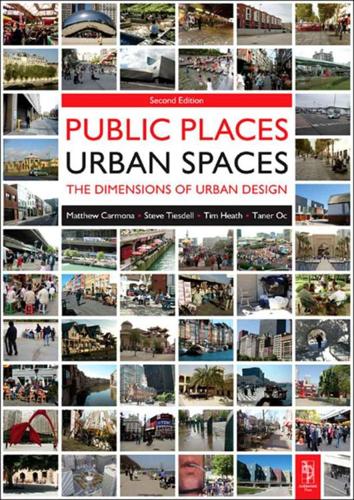
Public Places, Urban Spaces: The Dimensions of Urban Design
by
Matthew Carmona
,
Tim Heath
,
Steve Tiesdell
and
Taner Oc
Published 15 Feb 2010
In Notes on the Synthesis of Form (1964) and A City is Not a Tree (1965), Alexander identified both the failings of design philosophies that considered ‘form without context’ and the dangers of approaching urban design in ways that fail to allow for a rich diversity of cross-connections between activities and places (Jarvis 1980: 59). Alexander’s ideas were developed further in A Pattern Language (Alexander et al 1977) and The Timeless Way of Building (Alexander et al 1979), in which he set out a range of ‘patterns’. Rather than ‘complete designs’, each pattern was a ‘sketched minimum framework of essentials’, a ‘few basic instructions’ and ‘rough freehand sketches’ to be shaped and refined (Jarvis 1980: 59).
…
A spatial analysis of pedestrian preference, Journal of Urban Design, 13(1), 81–98 Ahlava A & Edelman H (2009) Urban Design Management: A Guide to Good Practice, Taylor & Francis, Abingdon Aldous, T (1992) Urban Villages: A Concept for Creating Mixed-Use Developments on a Sustainable Scale, Urban Villages Group, London Alexander, C (2004a) The Phenomenon of Life: The Nature of Order (Book 1), Centre for Environmental Structure, Berkeley, CA Alexander, C (2004b) Process of Creating Life: The Nature of Order(Book 2), Centre for Environmental Structure, Berkeley, CA Alexander, C (2004c) Vision of a Living World: The Nature of Order(Book 3), Centre for Environmental Structure, Berkeley, CA Alexander, C (2004d) The Luminous Ground: The Nature of Order (Book 4), Centre for Environmental Structure, Berkeley, CA Alexander, C (1965) A city is not a tree’, Architectural Forum, 122 (1 & 2), April/May, also in Bell, G & Tyrwhitt, R (1992) (Editors) Human Identity in the Urban Environment, Penguin, London Alexander, C (1987) A New Theory of Urban Design, Oxford University Press, Oxford Alexander, C (1979) The Timeless Way of Building, Oxford University Press, Oxford Alexander, C (1975) The Oregon Experiment, Oxford University Press, Oxford Alexander, C; Ishikawa, S & Silverstein, M (1977) A Pattern Language: Towns, Buildings, Construction, Oxford University Press, Oxford Alexander, C; Neis, H; Anninou, A & King, I (1987) A New Theory of Urban Design, Oxford University Press, New York Alexander, C; with Schmidt, R; Hanson, B; Alexander, M M & Mehafy, M (2008) Generative codes: The path to building welcoming, beautiful, sustainable neighbourhoods', in Haas, T New Urbanism and Beyond: Designing Cities for the Future, Rizzoli International, New York, 14–29 Alfonzo, M; Boarnet, M G; Day, K; McMillan, T; & Anderson, C L (2008) The relationship of neighbourhood built environment features and adult parent walking, Journal of Urban Design, 13(1), 29–52 Allen, J (2006) Ambient power: Berlin's Potsdamer Platz and the seductive logic of public spaces, Urban Studies 43(2), 411–455 Allen, S (no date) -http://www.stanallenarchitect.com/v1/infrastructure/ accessed 01/08/2009 20:16) Allen, S (2001) ‘Mat urbanism: The thick 2-D in Sarkis, H., CASE: Le Corbusier's Venice Hospital and the Mat Building Revival, Prestel, Harvard Design School, Munich, 118–126 Allmendinger, P & Tiesdell S (2004) Making sense of sustainable communities’, Town & Country Planning, November, 313–316 Almy, D. (2007) (editor) On Landscape Urbanism, Center 14, Centre for American Architecture and Design, University of Texas at Austin, Austin Ambrose, P (1986) Whatever Happened to Planning, Meuthen, London Amin, A & Graham, S (1997) The ordinary city, Transactions of the Institute of British Geographers 22, 411–429 Anderson, S (1978) (editor) On Streets, MIT Press, Cambridge, Mass Appignanesi, R & Garratt, C (1999) Introducing postmodernism, Icon Books, London Appleyard, D (1991) Foreword’, from Moudon, AV Public Streets for Public Use, Columbia University Press, New York, 5–8 Appleyard, D (1982) Three kinds of urban design practice, in Ferebee, A (Editor) Education for Urban Design, Institute for Urban Design, New York Appleyard, D (1981) Liveable Streets, University of California Press, Berkeley Appleyard, D (1980) Why buildings are known: A predictive tool for architects and planners, in Broadbent, G; Bunt, R & Llorens, T Meaning and Behaviour in the Built Environment, John Wiley & Sons, Chichester Appleyard, D (1976) Planning a Pluralist City: Conflicting Realities in Ciudad Guyana, MIT Press, Cambridge, Mass Appleyard, D & Lintell, M (1972) The environmental quality of city streets: The residents' viewpoint Journal of the American Institute of Planners, 38, 84–101 Appleyard, D; Lynch, K; & Myer, J (1964) The View from the Road, MIT Press, Cambridge, Mass Ardrey, R (1967) The Territorial Imperative: A Personal Inquiry into the Animal Origins of Property and Nations, Collins, London Arefi, M (1999) Non-place and placelessness as narratives of loss: Rethinking the notion of place, Journal of Urban Design, 4(2), 179–193 Arendt, H (1958) The Human Condition, University of Chicago Press, Chicago Arias, E; Eden, H & Gerhard, F (1997) Enhancing Communication, Facilitating Shared Understanding, and Creating Better Artifacts by Integrating Physical and Computational Media for Design, University of Colorado, Boulder Arnheim, R (1977) The Dynamics of Architectural Form, University of California Press, Berkeley Arnstein S (1969) A ladder of citizen participation, American Institute of Planners Journal, July, 216–224 Arup Economics & Planning (2000) Survey of Urban Design Skills in Local Government, DETR, London Ashworth, G J (1998) The conserved European city as cultural symbol: The meaning of the text in Graham, B (editor) Modern Europe: Place, Culture, Identity, Arnold, London, 261–286 Ashworth, G J (1997) Conservation as preservation or as heritage: Two paradigms and two answers, Built Environment, 23(2), 92–102 Ashworth, G J & Tunbridge, J E (1990) The Touristic-Historic City, Belhaven Press, London Atkinson, R (2003) Domestication by cappuccino or a revenge on urban space?
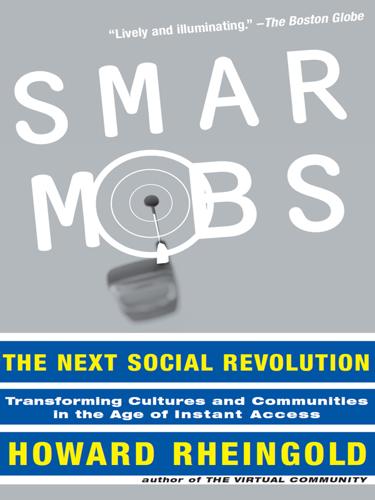
Smart Mobs: The Next Social Revolution
by
Howard Rheingold
Published 24 Dec 2011
How It Will Happen and What It Will Mean (Oxford: Oxford University Press, 1992). 39. William Shaw, “In Helsinki Virtual Village . . .,” Wired 9.03, March 2001, 157163, <http://www.wired.com/wired/archive/9.03/helsinki.html> (29 March 2002). 40. Ilkka Innamaa, interview by author, May 2000, Helsinki. 41. C. Alexander et al., A Pattern Language (New York: Oxford University Press, 1977). 42. Silberman, “Just Say Nokia.” 43. Richard Quest, “Nokia Keeps Finland Mobile,” Time, 157, 4 June 2001, <http://www.time.com/time/interactive/business/nokia_np.html> (12 October 2001). 44. Klee and Bensko, “The Future Is Finnish.” 45. Ibid. 46.
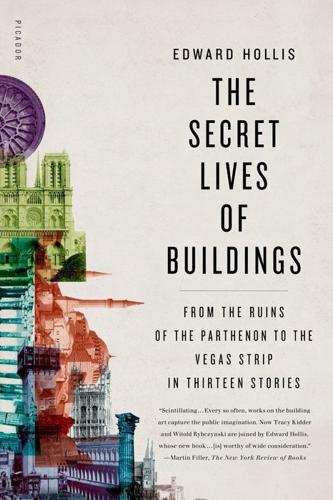
The Secret Lives of Buildings: From the Ruins of the Parthenon to the Vegas Strip in Thirteen Stories
by
Edward Hollis
Published 10 Nov 2009
Mary Smallwood (Penguin, 1970), p. 356. 299 “around the altar”: Ibid., p. 358. 300 “I am the LORD thy God”: Exodus 20:2–3 (King James version). 301 “Concerning this house”: 3 Kings 6:12, 13. 301 “ When ye come to appear before me”: Isaiah 1:12, 13. 301 “If I forget thee, O Jerusalem”: Psalm 137. 302 “To southward I set”: Quoted in Armstrong, Jerusalem, p. 337. Bibliography INTRODUCTION Alexander, Christopher. The Timeless Way of Building. Oxford University Press, 1979. Alexander, Christopher, et al. The Oregon Experiment. Oxford University Press, 1975. Alexander, Christopher, Sara Ishikawa, and Murray Silverstein. A Pattern Language: Towns, Buildings, Construction. Oxford University Press, 1977. Brand, Stewart. How Buildings Learn. Viking, 1994. Brooker, Graeme, and Sally Stone. Rereadings: Interior Architecture and the Design Principles of Remodeling Existing Buildings. RIBA Press, 2004. Calasso, Roberto. The Marriage of Cadmus and Harmony.

Corduroy Mansions
by
Alexander McCall Smith
Published 1 Jan 2009
People insist on a little strip of grass and a flowerbed—but how much use do they get out of that? They would use the space much more if they had a courtyard and grew plants in tubs and troughs. I really think that. “And there’s another thing,” he went on. “There’s a book you should read. It’s called A Pattern Language and it’s by a group of architects. I think the main author’s called Christopher Alexander, something like that. Anyway, they set out a whole lot of principles for humane architecture—for making rooms and houses in which people will feel comfortable. Rooms, for instance, should have light from two sources.

Reactive Messaging Patterns With the Actor Model: Applications and Integration in Scala and Akka
by
Vaughn Vernon
Published 16 Aug 2015
Thus, when you need a given pattern, you will at least know in general where to look to find it. Each pattern in the catalog has a representative icon and will also generally have at least one diagram and source code showing how to implement the pattern using Scala and Akka. The extensive catalog of patterns actually forms a pattern language, which is a set of interconnected expressions that together form a collective method of designing message-based applications and systems. Thus, it is often necessary for one pattern to refer to one or more other patterns in the catalog, as the supporting patterns form a complete language. Thus, when a pattern is referenced in this book, it is done like this: Pattern Name (#).

Dreaming in Code: Two Dozen Programmers, Three Years, 4,732 Bugs, and One Quest for Transcendent Software
by
Scott Rosenberg
Published 2 Jan 2006
A veteran programmer and student of the arcane art of object-oriented programming, in the early 1990s he was an early and avid participant in the pattern language movement, an effort on the part of software developers to apply the ideas of architectural philosopher Christopher Alexander to their work. Alexander’s book A Pattern Language derived a sort of grammar of construction by observing common elements or patterns in successful buildings. The software pattern–language people aimed to apply the same approach to programming. In the mid-1990s, they held a conference just as the Web burst into view, and Cunningham left it with an assignment: to build a hypertext repository that programmers could use to share their software patterns on the Web.

Love Over Scotland
by
Alexander McCall Smith
Published 31 Dec 2005
She liked him, and being from a small town she had that natural courtesy which has in many larger places all but disappeared. “Hello, Matthew,” she said. “You’re the first in today. Not a soul otherwise. Not even Angus and that dog of his.” Matthew leaned against the bar and peered at Big Lou’s book. He reached out and flipped the book over to reveal its cover. “A Pattern Language: Towns, Building, Construction?” he said. “Interesting, Lou. You going to build something?” Big Lou reclaimed her book. “You’ll lose my place, you great gowk,” she said affectionately. “It’s a gey good book. All about how we should design things. Buildings. Rooms. Public parks. Everything.

User Friendly: How the Hidden Rules of Design Are Changing the Way We Live, Work & Play
by
Cliff Kuang
and
Robert Fabricant
Published 7 Nov 2019
These are tenets that everyone who owns a smartphone today takes for granted. These are the principles that make the user-friendly world work. You need all these principles in place to master a machine, whether that machine is a nuclear reactor or a child’s toy. For you to master how a machine works, it needs to adhere to a pattern language. But there was one essential thing whose failure loomed largest at TMI, one essential thing that we demand of any gadget in our lives: feedback. When the light was lying, when the temperature readouts were printing “???,” and when there was no indicator telling anyone the system’s total water levels, the machine just wasn’t telling the men what they needed to know.
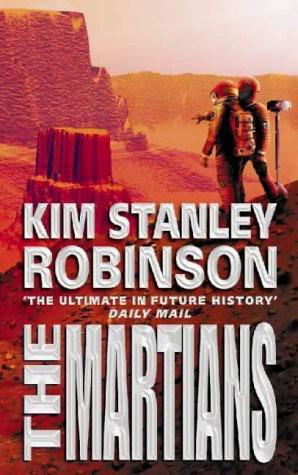
Martians
by
Kim Stanley Robinson
Published 6 Jul 1999
People would arrive at an unoccupied crater (among the some twenty thousand still listed by the environmental court for the southern highlands alone) with permits and programs, and set to work, and the first decade's economic activity in the town was primarily the building of it, often by people who had an idea what they wanted; sometimes with people holding tattered copies of A Pattern Language or some other design primer in their hands, or surfing the Web for things they liked. But soon enough every crater had people moving in who were out of the original group's control, and then it was a matter of spontaneous group self-organization, a process which works extremely well when the group is socially healthy.
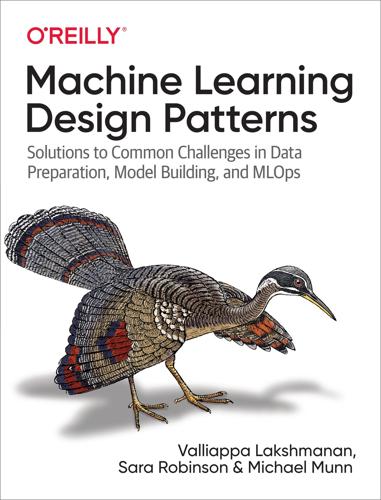
Machine Learning Design Patterns: Solutions to Common Challenges in Data Preparation, Model Building, and MLOps
by
Valliappa Lakshmanan
,
Sara Robinson
and
Michael Munn
Published 31 Oct 2020
This book is a catalog of machine learning design patterns that we have observed in the course of working with hundreds of machine learning teams. What Are Design Patterns? The idea of patterns, and a catalog of proven patterns, was introduced in the field of architecture by Christopher Alexander and five coauthors in a hugely influential book titled A Pattern Language (Oxford University Press, 1977). In their book, they catalog 253 patterns, introducing them this way: Each pattern describes a problem which occurs over and over again in our environment, and then describes the core of the solution to that problem, in such a way that you can use this solution a million times over, without ever doing it the same way twice
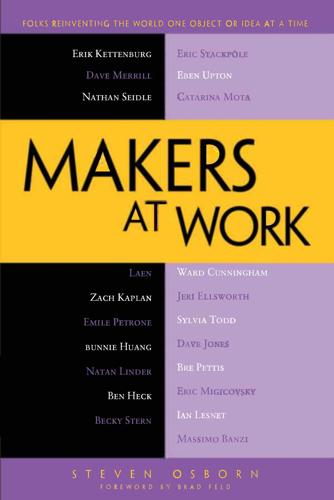
Makers at Work: Folks Reinventing the World One Object or Idea at a Time
by
Steven Osborn
Published 17 Sep 2013
And it turns out, it sounds easy, but that’s like if I asked you, “Just make me a list of all the words you know,” right? Well, what you know isn’t indexed that way. You can’t enumerate all the words you know, but when you need a word, it comes to mind because your mind is hooked together that way. Its how language works. And that’s why Alexander calls his work a pattern language—because it’s something hooks together design just like words hook together effortlessly. That was something that we were very keen on duplicating. At the time, people were saying, “Gee, we should make software that’s easy to use.” Well, that’s like saying you should make a house that’s safe or fireproof.
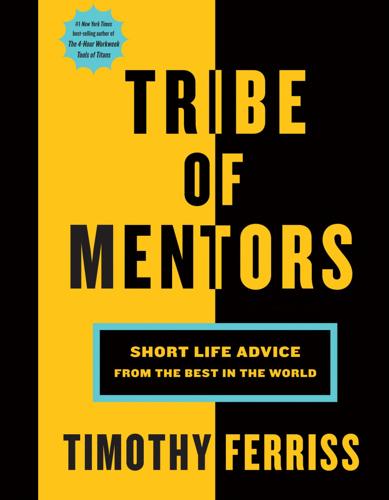
Tribe of Mentors: Short Life Advice From the Best in the World
by
Timothy Ferriss
Published 14 Jun 2017
Fast Company named Gretchen to its list of “Most Creative People in Business,” and she’s a member of Oprah’s “SuperSoul 100.” What is the book (or books) you’ve given most as a gift, and why? Or what are one to three books that have greatly influenced your life? I frequently give the book A Pattern Language by Christopher Alexander. I’m not a visual person, but this book taught me to see the world around me in an entirely new way. It’s a brilliant way of analyzing experience and information. It’s haunting. What is one of the best or most worthwhile investments you’ve ever made? I invested in three desktop computer monitors.